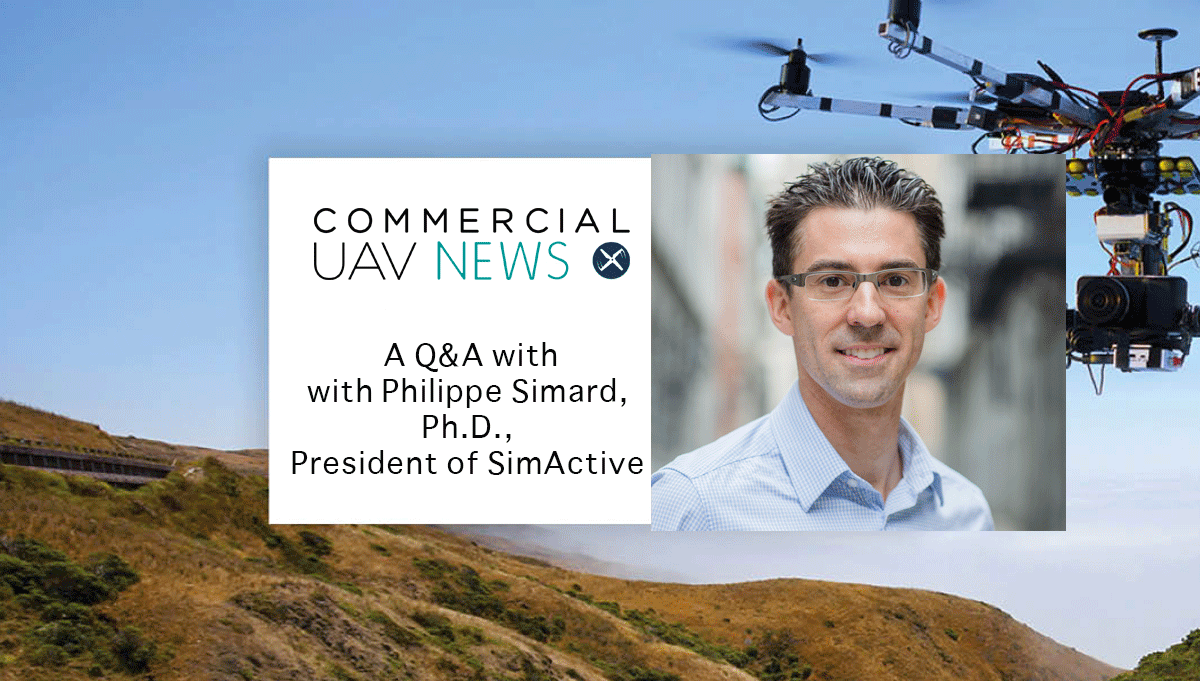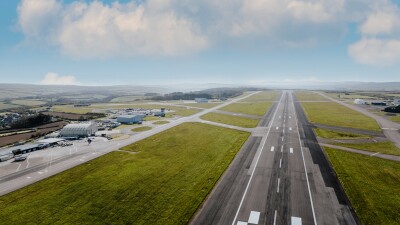One concept that’s come up over and over in the industry is around how the actual drones are becoming less and less of a focus for surveyors and other users. Whether we’re talking about surveyors, engineers, project managers or anyone else, what’s actually being done with the data being captured by a drone is becoming a much bigger concern and priority than the logistics of how that info was captured. What sort of assets can be created with this data? What drone software should they be using to figure out how to take advantage of all this info?
SimActive is a company that is dedicated to helping operators of all types and sizes sort through those very questions and concerns around data. SimActive has emerged as an industry leader by offering cutting-edge photogrammetry software backed by robust customer support. Correlator3D™ is a patented end-to-end photogrammetry solution for the generation of high-quality geospatial data from satellite and aerial imagery, including UAVs.To get a better understanding of how operators are using SimActive’s solution to sort through what they can and should do with this data, I connected with Philippe Simard, Ph.D., President of SimActive and a winner of the prestigious Young Innovator Award from the Networks of Centres of Excellence, which honors top Canadian researchers whose work benefits society. We talked about how he’s seen drone technology change the industry, why his product is different, what the future of the space looks like and plenty more. Jeremiah Karpowicz: You’ve been the President of SimActive since it was created in 2003, so what can you tell us about how you’ve seen the industry as a whole change over the past decade?Philippe Simard: When we started development of our Correlator3D software, traditional scanned films were still the norm. Over the ten years that followed, we saw a gradual shift to large format digital cameras. And when that transition completed, then small UAVs with consumer grade cameras started to be used for mapping, introducing a whole new dimension to the industry. How has your product and company changed since those early days?Our product development has been intimately related to the sensors being used over time. The capability of digital cameras to capture large quantities of data in short periods of time necessitated development of rapid processing software. Along with our products, our business model was also adapted to meet new client requirements. The best example is our recent subscription option, where clients can pay on a monthly basis instead of buying a permanent license. When did you see and recognize the potential that drones had in terms of making an impact in this industry?Five years ago, some of our clients started experimenting with drones. The platforms rapidly evolved and became stable enough to collect imagery suitable for mapping applications. Initially, these were high-end UAVs, but in a matter of a couple of years only, low-cost options with similar capabilities became available as well. These new options made possible for virtually anyone to buy a drone, inevitably impacting the mapping industry. How have drones changed the expectations for both clients and operators? Collecting imagery using satellite or manned aircraft usually requires at least a few days depending on the area covered, where projects encompass entire cities, counties, provinces or even countries. The production of elevation data and orthomosaics, as well as its quality control, will often take a few weeks. With drones, this paradigm is completely different in that a project can be flown in the morning, processed in the afternoon, and delivered by the end of the day. Tell us about the creation and development of drone software like Correlator3D. What have been some of your major lessons learned? Since our creation, we have been continually investing in research and development. This has allowed us to offer the first photogrammetry software accelerated by GPU technology. We have stayed ahead of competition for more than a decade by quickly adjusting our products to maintain our technological advantage. What makes your solutions stand out from some of the other alternatives that are out there? As it was originally designed for large-format cameras and satellite photos, our software is a professional, higher-end solution in comparison to other UAV tools. Correlator3D is the fastest solution, with speed gains of up to 20 times that of competing products. The software can also ingest an unlimited number of images, and offers editing tools to modify results as required.How does your customer support factor into that topic?While it may be relatively easy to collect imagery using a drone, producing highly accurate mapping products can still be challenging for neophytes. Not only do we offer technical support on the software to our clients, we also guide them on how to gather images with their platform to obtain optimal results.What sorts of projects has the product been used on? Correlator3D is used in more than 50 countries around the world. Clients comprise government agencies, militaries, large mapping companies as well as SMEs. Correlator3D was thus used for any possible mapping project from any type of sensor and flying platform. Applications cover all fields, from precision agriculture, mining, to railway inspection and emergency response to only name a few.
How has your product and company changed since those early days?Our product development has been intimately related to the sensors being used over time. The capability of digital cameras to capture large quantities of data in short periods of time necessitated development of rapid processing software. Along with our products, our business model was also adapted to meet new client requirements. The best example is our recent subscription option, where clients can pay on a monthly basis instead of buying a permanent license. When did you see and recognize the potential that drones had in terms of making an impact in this industry?Five years ago, some of our clients started experimenting with drones. The platforms rapidly evolved and became stable enough to collect imagery suitable for mapping applications. Initially, these were high-end UAVs, but in a matter of a couple of years only, low-cost options with similar capabilities became available as well. These new options made possible for virtually anyone to buy a drone, inevitably impacting the mapping industry. How have drones changed the expectations for both clients and operators? Collecting imagery using satellite or manned aircraft usually requires at least a few days depending on the area covered, where projects encompass entire cities, counties, provinces or even countries. The production of elevation data and orthomosaics, as well as its quality control, will often take a few weeks. With drones, this paradigm is completely different in that a project can be flown in the morning, processed in the afternoon, and delivered by the end of the day. Tell us about the creation and development of drone software like Correlator3D. What have been some of your major lessons learned? Since our creation, we have been continually investing in research and development. This has allowed us to offer the first photogrammetry software accelerated by GPU technology. We have stayed ahead of competition for more than a decade by quickly adjusting our products to maintain our technological advantage. What makes your solutions stand out from some of the other alternatives that are out there? As it was originally designed for large-format cameras and satellite photos, our software is a professional, higher-end solution in comparison to other UAV tools. Correlator3D is the fastest solution, with speed gains of up to 20 times that of competing products. The software can also ingest an unlimited number of images, and offers editing tools to modify results as required.How does your customer support factor into that topic?While it may be relatively easy to collect imagery using a drone, producing highly accurate mapping products can still be challenging for neophytes. Not only do we offer technical support on the software to our clients, we also guide them on how to gather images with their platform to obtain optimal results.What sorts of projects has the product been used on? Correlator3D is used in more than 50 countries around the world. Clients comprise government agencies, militaries, large mapping companies as well as SMEs. Correlator3D was thus used for any possible mapping project from any type of sensor and flying platform. Applications cover all fields, from precision agriculture, mining, to railway inspection and emergency response to only name a few.  In what ways have you seen users take advantage of the product’s capabilities to impact their bottom line? The processing speed of the software allows our users to complete a typical project in less than an hour, as opposed to days. Combined with our intuitive editing and quality assurance tools, it allows them to significantly increase efficiency, while delivering higher quality results in less time. Are you seeing many people struggle with challenges that relate to managing large datasets? How can users better approach these types of issues? A major issue when using other software tools is that larger projects of several thousands of images need to be split into different subparts. Additionally, the associated processing time is exponential with respect to the number of images, which literally makes processing these a great challenge. With Correlator3D, timings are linear and projects of any size can be handled in a single block. It’s been about 13 years since Simactive was founded, so what do you think the company and the industry look like in the next 13 years?The drones are causing a democratization of photogrammetry. Once reserved for people who had years of experience, the price of UAVs coupled with the ease of use of products like Correlator3D is making the technology available to anyone. We thus see an exponential growth in mapping applications from drones and use of our software. What’s the best way for anyone wondering whether or not Correlator3D is going to be a fit for them to get started?Potential clients can download a free trial of our software directly from our website. Furthermore, we also offer customized demonstrations in which we process sample datasets and present results during a WebEx demonstration. This allows a smooth first experience and a free introduction to photogrammetry.
In what ways have you seen users take advantage of the product’s capabilities to impact their bottom line? The processing speed of the software allows our users to complete a typical project in less than an hour, as opposed to days. Combined with our intuitive editing and quality assurance tools, it allows them to significantly increase efficiency, while delivering higher quality results in less time. Are you seeing many people struggle with challenges that relate to managing large datasets? How can users better approach these types of issues? A major issue when using other software tools is that larger projects of several thousands of images need to be split into different subparts. Additionally, the associated processing time is exponential with respect to the number of images, which literally makes processing these a great challenge. With Correlator3D, timings are linear and projects of any size can be handled in a single block. It’s been about 13 years since Simactive was founded, so what do you think the company and the industry look like in the next 13 years?The drones are causing a democratization of photogrammetry. Once reserved for people who had years of experience, the price of UAVs coupled with the ease of use of products like Correlator3D is making the technology available to anyone. We thus see an exponential growth in mapping applications from drones and use of our software. What’s the best way for anyone wondering whether or not Correlator3D is going to be a fit for them to get started?Potential clients can download a free trial of our software directly from our website. Furthermore, we also offer customized demonstrations in which we process sample datasets and present results during a WebEx demonstration. This allows a smooth first experience and a free introduction to photogrammetry. 















Comments